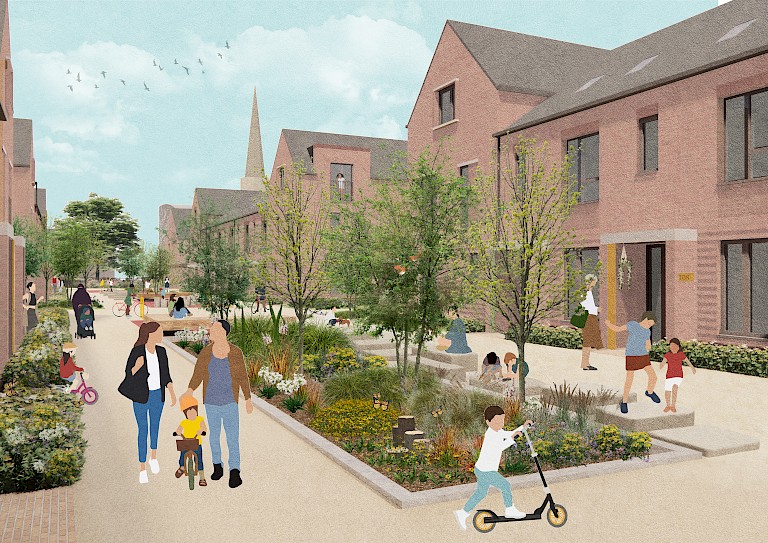
The idea of a home strikes a deep, emotional chord within all of us particularly at this festive time of year. It represents protection, comfort and a place to be yourself. The communities in which our homes are set often reinforce these feelings. Together, they form the settings for our everyday activities and interactions. Many of us appreciate this more than ever following the upheaval over the last few years.
The home becomes even more important as we age. We will likely spend more time there and it may require adaptation to support our changing needs. However, the same emotional connection and sense of wellbeing need to be retained.
For some, there is still a stigma surrounding the idea of housing for older generations with perceptions that the spaces are clinical or dated, and that moving there is an acceptance of a less active lifestyle. Older people, however, are no less varied in their interests and abilities than the rest of the population, and good design should enable them to continue their usual activities whilst adapting to their changing requirements over time. We believe that providing considerately designed homes which meet the needs of older residents can bring positive benefits in health and mental wellbeing as well as a more independent lifestyle.
One of the ways we believe in achieving this is early engagement with resident groups as part of the design process to understand what they really value in where they would like to live – in other words, what would make a place a home. From these discussions, key themes regularly appear: maximising natural light; visual connectivity to the outdoors; and plenty of space for communal interaction, all principles espoused in the HAPPI reports.
The principles represent good design in general and make a home easy to live in, but they become crucial when there are physical or mental limitations. We strive to integrate all 10 principles in our projects, particularly those for older residents, and have done so at The Courtyards in Preston where their importance to the residents in those initial discussions was a regular point of reference during the design process.
The final scheme provides 60 apartments arranged around two landscaped courtyards creating a strong connection with nature. All apartments are dual aspect and flooded with natural light. In each a window from the kitchen overlooks allowing for moments of social interaction as neighbours pass by with a friendly wave. Creating that community feel is something that we feel is vital to all our residential projects. At The Courtyards this is not just amongst the residents themselves, family groups are regular visitors and the Bistro at the heart of the scheme is open to the wider community and has become a gathering place for many a cup of tea and slice of cake. It also hosts regular events such as bingo and film nights.
We really value and enjoy returning to completed projects to meet building users to understand how the design principles are working for them. Having spoken to many residents of The Courtyards and their families it is evident that the time taken to define which aspects of a design can make the most difference in people’s lives should not be underestimated.
“When I moved to The Courtyards, I literally cried tears of joy. The staff are brilliant, and I’ve made so many friends. There’s a real community spirit that you don’t get on your own in a house.” – current resident
Those emotional responses to comfort and security were evident from the smiles and a real affirmation that in the understanding of people’s needs, and the implementation of HAPPI principles, homely spaces can be created in which the required care can be provided but which do not impede on anyone’s independence. The feedback we have received has been fantastic and if ever a reminder was needed that the design of people’s homes can have a profound impact on their quality of life, then discussions like these are it.






